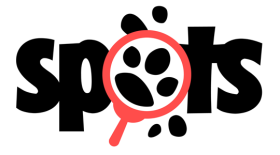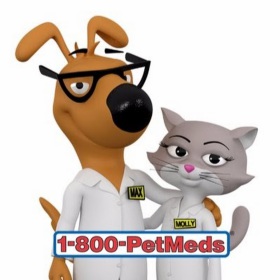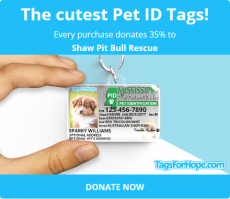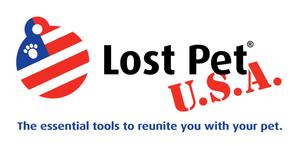Inbreeding...Line breeding... and a little about Genetics
Outcrossing is the mating of two dogs that are the products of line breeding but of two distinctly separate lines.
Isn't inbreeding a bad thing? Not always...
First of all it's important to note that were it not for selective, deliberate inbreeding, many popular breeds would not exist today.
All of the well known breeds have at least some history of inbreeding in their heritage due to the process of establishing a particular breed, which evolves over many years and in some cases,
centuries.
But inbreeding is not without its associated problems, and is sometimes considered to be rather controversial, due to fad colors and ill-informed 'breeders' these days.
Establishing a breed begins with dogs in a certain area having several desirable characteristics that are, when combined, unique to that small set of dogs. This can include factors such as their temperament, distinctive looks, or a particular talent for a certain type of working activity such as herding, retrieving or guarding.
The traits that make a particular dog (or set of dogs) desirable, mean that they will in turn become popular and in demand, as other people aspire to own a dog which possesses the same characteristics.
This then leads to attempts to produce more dogs sharing the desirable traits of the original dogs, and of course in order to do this it is necessary to produce pups from either a sire or dam (or both) with those traits. Of course, since there are only a relatively low number of dogs with those traits, that also means that the gene pool from which new pups possessing the same traits can be produced is small.
It is not uncommon at this stage of establishing a breed to inbreed dogs (to produce pups with the same desirable traits as the parents) by matings of siblings, cousins and other closely related
dogs. Outcrossing to unrelated dogs is also very likely to occur, and while this has many benefits that inbreeding does not have (such as reduced likelihood of inherited flaws and genetic mutations
developing), it also serves to potentially dilute out the desirable traits of the original dogs, and so a balance between the two factors must be reached.
Sometimes, the genetic mutation is the desirable trait of the dog or dogs in question, such as in the case of the 'blue' pit bull. When the genetic mutation is the desirable trait of the dog,
inbreeding to a fairly high degree in the early stages of the establishment of the breed is necessary in order to establish the breed and make the mutation prevalent and the gene dominant within the
breed. ** NOTE HERE - 'establishment of the breed' **
Disadvantages on inbreeding dogs
While inbreeding to some extent has played a part in the establishment of all modern breeds of dog and will likely continue to do so, inbreeding also has a significant amount of potential problems
and risk factors associated with it.
Inbreeding results in an increased likelihood of undesirable traits being inherited into the subsequent offspring, and heightens the chances of recessive mutations occurring. While sometimes these
mutations are a desirable effect of selective breeding, such as in the case of the 'blue' dogs as mentioned above, the potential for undesirable and unforeseen mutations occurring alongside of these
is considerably greater.
Several hereditary conditions and illnesses which can be inherited by dogs only occur if the pups inherit the recessive gene from both their sire and dam, and the likelihood of them having two
parents with the recessive gene which then causes the potential problem in the pup is of course much higher if the two parents are closely related in the first place.
Conditions such as hip dysplasia and patella luxation are just two of the many potential congenital defects and hereditary conditions that can occur from inbreeding, which leads to all of the
pedigree dogs of a given breed being genetically relatively closely related.
'Blue' coats are a fad color right now, and greedy breeders are churning out 'blue' dogs to make money off the fad, without concern for temperament or health. Similarly, 'red' and 'blue' nose pit bulls are very common. White pit bulls are also common—and many can be deaf and prone to skin problems.
In any case, what causes the blue-gray coloration may actually surprise you. Blue is a dilution of the color black. The genetic make-up of a blue dog contains a recessive trait that causes the color pigmentation to clump around the middle of the hair shaft leaving the tips colorless. The effect to our eyes is the dusky gray that is commonly called blue.
A few years ago, red nose pit bulls were all the rage and are still fairly popular today. However, they simply have a red nose. These are NOT the 'Old Family Red Nose' dogs that 'breeders' would like to have you believe. No doubt, a few years from now, some other coat color or physical attribute will take center stage and become the 'flavor du jour'.
While the 'blue' or 'red nose' dogs may be striking to look at, there are drawbacks to selecting a pit bull based primarily on appearance. Steer clear of breeders who are breeding specifically
for certain colors. Such breeders are in it for the money and could care less about the health or temperament of their dogs.
In order for a recessive trait to be expressed in the offspring, both parents must carry the gene for the recessive trait. Add to that the fact that the alleles that interact with and influence coat and skin color and color patterns are found in several places along the canine genome, and you can appreciate how tricky producing a particular color can be.
Bottom line. Breeders who specialize in 'blue' pit bulls, in order to ensure the production of blue pups, must necessarily limit themselves to a relatively small gene pool. It's not uncommon for
breeders to use dogs from the same families over and over in repeated breedings to bring the recessive traits to the fore. This practice, when overdone, is associated with both health and
behavioral problems, especially when practiced by the uneducated and utilized for specific colors and not temperament/health/etc.
The most common health problems associated with blue coated dogs are skin diseases - ranging from hot spots to allopecia to mange. While most of these conditions are treatable, they can be stubborn to resolve and the cumulative cost can be expensive.
According to an article on the genetics of color found in The Encyclopedia of the American Pit Bull Terrier, the cells that create pigmentation interact closely with the neurological and
immune systems. The article suggests that this may explain why dogs with recessive coloration seem more susceptible to nervous conditions and immune disorders. Consider, for example, the high
incidences of deafness, low vision and temperament issues that are associated with white, merle and harlequin dogs.
In Summary
Inbreeding locks in specific traits. If an undesirable trait is locked in - it would take 15 generations of selective outcrossing to remove that trait... there aren't many breeders that know this, much less practice it.
Most breeders these days do not tend to practice strict breeding guidelines; especially those that breed for a specific color or have multiple litters per year... Whether inbred or not, if a 'breeder' does not have knowledge of several generations of the dogs they intend on breeding, it shouldn't be done.














